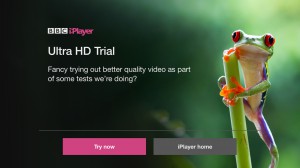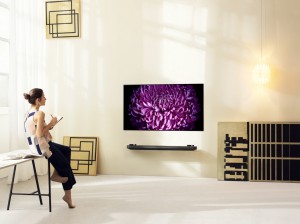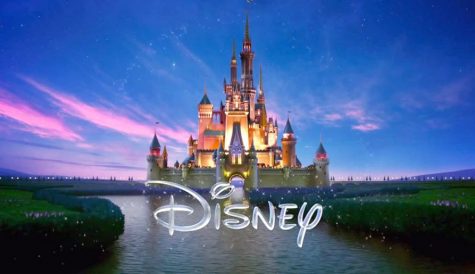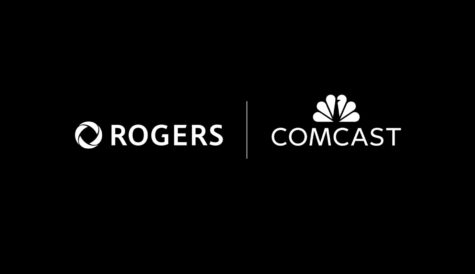The future of Ultra HD
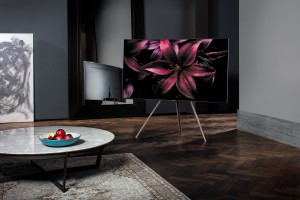
Samsung debuted its latest QLED TV line at this year’s Consumer Electronics Show
We are on the cusp of pictures that are brighter, crisper and more impressive than they have ever been before. Andy McDonald looks at the latest moves towards advanced Ultra HD.
Since mid-2016 a host of industry developments have paved the way for the introduction of Ultra High Definition television that goes beyond higher resolution 4K pictures.
High Dyanamic Range is, for many, the most important of these emerging technologies. However, Higher Frame Rates, Wider Colour Gamut and spatial audio all promise to make the viewing experience closer than it has ever been before to reality. Thanks to the dedication and hard work of various industry bodies, the past year has seen a number of breakthroughs, including the ITU’s announcement of a new standard for High Dynamic Range television and the DVB Steering Board’s approval of the UHD-1 Phase 2 specification.
Digital TV Europe spoke to some of those most closely involved in Europe’s move towards next-generation Ultra HD and look towards life in a truly post-HD world.
Summer of UHD
Last summer the ITU took a major step in the advancement of television broadcasting with the release of a new standard for High Dynamic Range television. The ITU’s Radiocommunication Sector (ITU-R) developed the BT.2100 standard in collaboration with experts from the television industry, broadcasting organisations and regulatory institutions in its Study Group, updating its 2015-approved BT.2020 Recommendation for Ultra HD TV. Included in the new recommendation are two options for producing High Dynamic Range TV images – Perceptual Quantization (PQ) and Hybrid Log-Gamma (HLG), as well as a simple conversion process between the two HDR-TV options. UHDTV Recommendation BT.2100 also allows TV producers to choose from three levels of resolution: HDTV (1920 x 1080); UHD TV ‘4K’ (3840 x 2160); and ‘8K’ (7680 x 4320).
Andy Quested, chairman of ITU-R Working Party 6C, explains that BT.2100 builds on and is an extension of BT.2020. The colour imagery is the same between the two recommendations, the frame rates are the same and both only allow progressive scan images. However one notable difference is that ITU-R added 1920 x 1080 HD resolution into the standard – something it had omitted from BT.2020.
“There was a good reason for doing that, in that we think that UHD is wasted without HDR,” says Quested. He argues that allowing HDR compatibility with progressive HD pictures will mean that daytime programming will not be confined to Standard Dynamic Range (SDR), helping to reduce what could be a perceived by viewers as a huge disparity between ‘high-end’ shows and the bulk of a broadcaster’s programming schedule as the technology starts to take off.
“There will be people who don’t see the difference between good HD and UHD in terms of resolution, and that’s down to TV style, eyesight and distance from the screen. But there’s nobody that will not see the difference between an SDR and HDR image. I think as a sales point, HDR sells more TVs than resolution,” says Quested.
“Eventually the resolution will sell more TVs than HDR, because TVs will be much larger and it will be needed. If you think about the changeover period, when people have 42-inch or 50-inch screens, the resolution difference is only visible on, I would say, certain shots – not on all shots. You go up to 80-inch screens, which aren’t that far away, and resolution becomes as important. So it’s not that it’s less important, but it’s about timing.”
HDR and beyond
Hybrid Log-Gamma and Perceptual Quantizer are important parts of the ITU’s Ultra HD specifications. While both are capable of delivering identical High Dynamic Range images, the BBC and NHK worked together to produce HLG as an alternative to Dolby’s PQ, in order to create something more suited to live broadcasting. Richard Salmon, a lead engineer at the BBC’s Research & Development arm, explains: “We looked at the Dolby proposal and thought the pictures looked good, but we struggled to see how you could implement it in a broadcast infrastructure. So we developed our own ideas, NHK developed their ideas, and then we came together. Each of us had to compromise somewhat to come up with a joint proposal, but our ideas were sufficiently similar that we could.”
The collaboration between the Japanese and UK public broadcasters stems from a long history of working together, a by-product of the fact that NHK and the BBC have the world’s first and second largest broadcaster research labs. Salmon claims that in the case of HLG, the two R&D divisions had different ideas about where, for example, the blending point between the log and the gamma was going to be. However, by discussing such figures and challenging each other’s approaches they were able to jointly come up with something that was better than either original proposal.
Salmon, like many other industry experts, believes that HDR is the standout technology related to next-generation Ultra HD, as it can apply to all types of content. In December the BBC ran a trial on the iPlayer, using HLG to offer a four-minute segment of footage from Planet Earth II in 4K High Dynamic Range. The corporation described the experiment as an “early but important step toward streaming high-quality Ultra HD programmes on BBC iPlayer in the future.”
“High Dynamic Range is probably the most important in terms of being a step-change for the viewer,” says Salmon. “The tests we’ve done, both in the BBC and the European Broadcasting Union, have shown that by just increasing the resolution from HD – doubling the resolution in each direction, which is what UHD-1 does – the perceived benefit, even at the optimum viewing distance, is noticeable – but marginal.”
This is borne out by the findings of a BBC R&D white paper, titled ‘A Survey of UK Television Viewing Conditions’.
Published in January 2015, the research paper noted that the optimum viewing distance for high definition television is just over three times the screen height (3H) away. According to the study, people sitting this distance or closer to the screen could potentially benefit from resolution that goes beyond that of high definition – yet this only applied to 10.2% of respondents. A mere 1.5% of respondents were found to watch TV from a distance of 1.5H or closer, which would give them the “full benefit of a UHD service”.
While HDR certainly carries a ‘wow factor’, other technologies can also be implemented to reproduce more life-like images. Salmon claims that while ‘constant luminance’ was included in the ITU-R’s BT.2020 recommendations, it did not make it into BT.2100 as this is still too far ahead of its time.
“Constant luminance is the way the eye works, but when colour TV was first introduced back in the 1960s and ‘70s it had to be done in a way that was compatible with black and white television. So to do that there had to be some compromises in terms of the order in which matrixing and gamma correction were done. Having made that compromise back then, it’s now extremely difficult to change it,” says Salmon.
“We tried to get it into high-definition television standards 20 years ago. It was too revolutionary then and it’s still a bit too revolutionary, so it’s not included in the new ITU 2100 standard,” he adds. “It changes, potentially, the way you make television programmes and it’s a battle that every so often we’ve proposed but there just isn’t enough interest in it across the world.”
The next phase
In November the Digital Video Broadcasting (DVB) Steering Board followed in the footsteps of the ITU by publishing its updated UHD-1 Phase 2 specification. Building on UHD-1 Phase 1, which was based around spatial resolution of 4K, Phase 2 added in newer features like High Dynamic Range, Higher Frame Rates and next-generation audio, and was hailed by the Steering Board as a “major milestone for the industry”.
The open standards body’s Phase 2 HDR specification supports HLG and PQ transfer functions, defines higher frame rates that go beyond the current 50/60 fps, and has also added next generation audio schemes to provide immersive and personalised audio content using object- or scene-based coding.
“We’ve worked hard to try and ensure that the specification is based on a consensus in the industry and we’re quite proud of the fact that we’re able to achieve that,” says DVB chairman Peter MacAvock
MacAvock describes a “gargantuan effort” in getting the specification out the door, with six to eight months needed to get the technical specification finalised and nearly two years to agree the commercial requirements.
“One of the difficulties that we of course faced was the fact that, as the DVB process was proceeding, so too were developments in the marketplace, because during that period of time Netflix launched its services in 4K. Also we were faced with a situation where there was a number of technical proponents proposing their own systems, but who had already deployed their solutions commercially,” says MacAvock.
He claims that while, in an ideal world, standards development would work in parallel to service development, the DVB accepts that in the IP markets occupied by Netflix and even BT’s 4K sports service, there is less need for the type of horizontal standards needed by free-to-air services.
“We recognise that organisations may choose to deploy services prior to the finalisation of the technical specifications. There are risks associated with doing that, but they’re perfectly entitled to go down that route. In a similar position I would probably do the same thing they have done – not wait for the DVB project to forge ahead,” says MacAvock.
As he sees it, the DVB’s latest specifications came together against the backdrop of the rapid commoditisation of 4K panels in the consumer electronics industry, and also the realisation that OTT providers that will “drive the rollout of Ultra HD services” in the short- to medium-term.
“What we’re seeing is that traditional broadcasters are very involved in producing UHD content – even if they’re not in the business yet of distributing it at mainstream to their customers,” says MacAvock. “It ‘s great to be able to have the luxury of all adopting technologies as they become available, but ultimately it’s a balancing act – you’ve got to justify the expenditures in terms of your shareholders or your other stakeholders. So it’s not as easy as saying everybody should deploy UHD services now.”
Raising the rate
Higher Frame Rates add another interesting dimension to picture quality, though one phenomenon that looks likely to persist as the world moves towards Ultra HD is a variance in frame-rate standards based on geographical location. “Until we come to a common mains [power] frequency we’ll always have that issue. It’s a fundamental fact of life,” says Quested.
PAL and NTSC regions today dictate that frame rates must be at 25 and 30 frames-per-second respectively to be compatible with the 50 and 60Hz frequencies used in mains power in differing parts of the world. While some had hoped for this to be resolved with a universal Higher Frame-Rate standard, 50fps and 100fps standards in 50Hz regions will still be matched by comparable 60fps and 120fps variants in 60Hz locales. “Unfortunately when we started doing some tests, we realised there’s some fundamental issues. If you go to any football stadium in Europe that isn’t using brand new, very efficient LED lighting, as soon as you pass twice the mains frequency on your frame rate, you get flicker,” says Quested.
With the increase in resolution, there is also the challenge of motion blur. Salmon explains that as you increase the
static resolution you have more pixels going past the camera, which makes the image look more blurred when you pan the camera – for instance during live football. If there’s a marked difference between the static and the dynamic resolution, it becomes uncomfortable for the viewer. “HD was right on the cusp of that effect, so we had to reduce the artificial sharpness, because it wasn’t actually needed, and slightly shorten the shutter to sharpen the moving images. That worked for HD. As we double the resolution, it becomes more of a problem again. So the studies that we’ve done and NHK has done in Japan shows that we needed something around 1/300 of a second shutter to stop the motion blurring,” says Salmon.
“Back in 2008 I suggested that we should perhaps be looking towards a 300 frames per second TV system. The Japanese managed to persuade me that that was going to be impractical. We settled on 100 in Europe and 120 in Japan as the frame-rate. That satisfies human vision, if you can track the motion.”
In reality, these frame-rates, which are included in all the current standards for future television systems, will most benefit sports broadcasters, as they are arguably pushing the envelope in terms of picture rendition. As a style choice, TV drama still typically strives for the ‘filmic look’ afforded by 25fps.
Quested sees frame-rate as an artistic tool to be used by content makers – not the domain of engineers. However, he says work is also underway on Dynamic Frame Rate.
“In other words frame-rate that can change during a programme,” he says. “We’ve just started object audio. Object video is coming along. Why doesn’t the frame-rate match the speed of movement of the object? That is a long way out, but in virtual reality that might become really important, and also quite possible.”
All eyes on 2020
While the ITU and DVB have done valuable work towards the deployment of advanced Ultra HD TV, the move towards High Dynamic Range and Higher Frame Rates is also being aided by a wide number of industry bodies.
Madeleine Noland is chair of the guidelines working group at the Ultra HD Forum, which released version 1.2 of its Ultra HD Phase A industry guidelines at the Consumer Electronics Show in January. The Forum says Ultra HD Phase A encompasses practices and technologies that are commercially feasible in UHD services today, with the latest update including information on, among other things, implementation of channel-based immersive audio and down-converting HDR/WCG to the ITU’s BT.709 SDR specification.
“I think that one of the things that the forum brings to bear is we really are a glass-to-glass organisation – from camera to display,” says Noland. “Whereas organisations like the DVB are very much focused on terrestrial transmission, or the equivalent in the case of satellite or cable, they don’t really go all the way back into the world of production. With the Forum, we’re really trying to help the service providers who have to manage the entire ecosystem.”
In the UK, non-profit technology innovation body the DTG is also keeping pace of market developments. Its D-Book defines the requirements for every new TV and digital-terrestrial television receiver in the UK. D-Book 9, published in November, includes support for High Dynamic Range and mandated the use of HEVC for HD, IP-delivered services in order to pave the way for UHD.
The DTG also holds regular ‘Plugfests’ which David Daniels, the DTG’s lead on UHD and VR, describes as “a bit like speed-dating” for display and receiver makers. “You put a whole load of displays into the room and then you take a receiver round and you plug it into the back of each display in turn and see what happens. It’s a fairly rapid-fire way of checking out whether or not you’ve implemented the specs correctly and whether the displays recognise what they’re being given.”
Asked when the first free-to-air receiver boxes compatible with HDR are likely to hit the market in the UK, Daniels says: “How long is a piece of string? From an IP point of view, they will be capable of it within the next 12-18 months. But from a broadcast point of view, we’re a ways off doing that.”
Quested at the ITU has firmer views about when HDR UHD might start to become ubiquitous among TV viewers; he says that all signs point to 2020. “I don’t know if it’s coincidence or deliberate, but if you go to an optician, what’s the best vision that you’d hope to ever have? 20/20. What’s the standard? BT.2020. And what’s the year of the Japanese Olympics? You can see this sort of coming together around 2020 and I feel that those Olympics will be the first big event – even though the Japanese, for reasons of national pride, are doing it in 8K.”
In Japan, NHK and others are already testing two UHD broadcast channels over satellite, and there’s also a commercial satellite channel on air in Europe. All three are using HLG. In 2014 BBC R&D also successfully transmitted UHD content over IP and from terrestrial transmitters, during a trial staged at the Commonwealth Games in Glasgow.
Bandwidth remains an issue. “Progress on HEVC coding is ongoing and it is improving all the time. Although while non real-time HEVC encoding has improved, real-time HEVC encoding still awaits the efficiency gains we expect to see as a codec matures,” says Salmon. “UHD using HLG has now been demonstrated using both satellite transmission, and in the recent BBC iPlayer trial of Planet Earth II, showing that all transmission options are potentially feasible for UHD with HLG.”
While IP-delivered services like Netflix, Amazon and BT Sport may have made the first push into 4K, the signs are that the industry as a whole is moving towards next-generation UHD services. As the specifications fall into place, it is only a matter of time before advanced, more life-like images become a living room reality.

